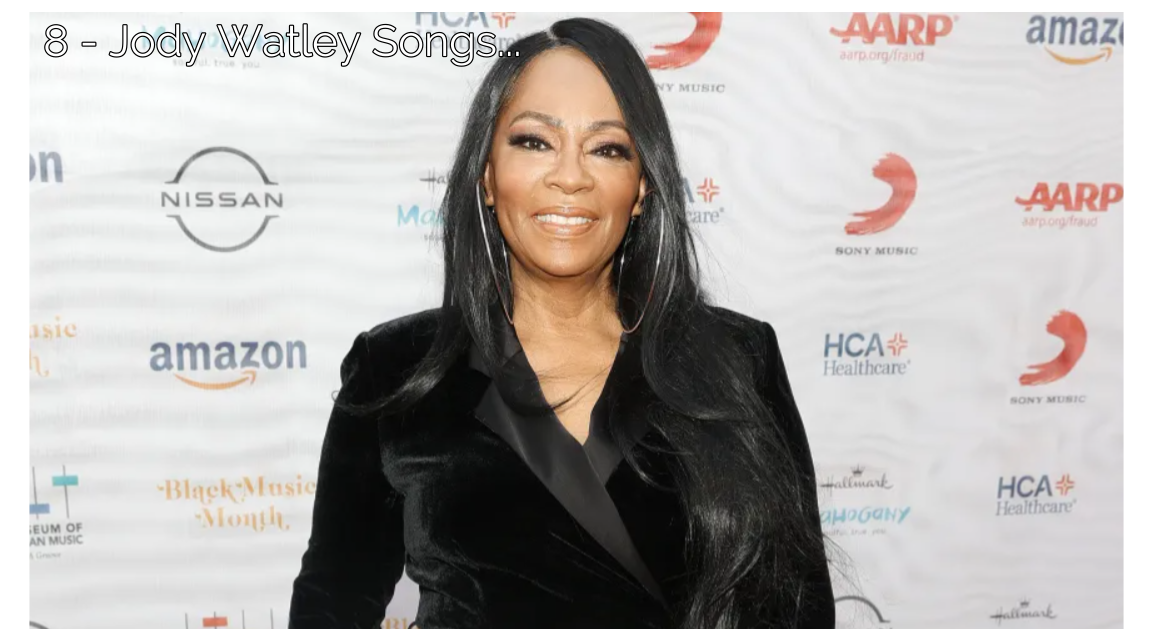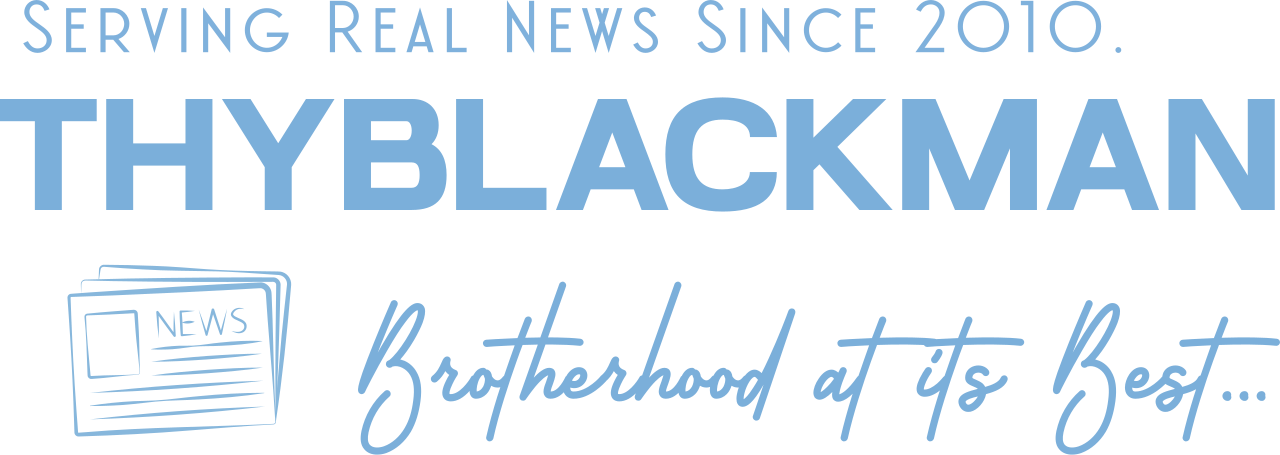(ThyBlackMan.com) When I think about the artists who’ve shaped the sound of modern R&B, pop, and dance music, Jody Watley’s name always rises to the top of the list. She wasn’t just a chart-topping diva—she was (and still is) a trendsetter, a visionary, and a voice that effortlessly blends glamour with grit. As a former member of Shalamar who broke out into solo stardom, she crafted a style and sound that felt ahead of its time. Her music made you want to move, made you feel powerful, and every so often, it made you stop and reflect on love, heartbreak, or self-worth.
Whether you’re revisiting her catalog or discovering her for the first time, there are some tracks that truly stand the test of time. These aren’t just hits—they’re moments. They’re soundtracks to late nights, breakups, big wins, and quiet Sunday mornings. So, I put together a list of eight Jody Watley songs that still hit just as hard today as they did when they first dropped. If you love music with soul, attitude, and elegance, these are essential listens.

1. “Looking for a New Love” (1987)
“Looking for a New Love” is the career-defining debut single that instantly crowned Jody Watley as a solo star. Released in 1987, the song became a Top 10 hit around the globe, thanks in part to its irresistible beat, Watley’s sassy vocal delivery, and the now-iconic line, “Hasta la vista, baby.” It’s a breakup anthem that feels both fierce and liberating—a masterclass in turning heartbreak into a fashion-forward strut on the dancefloor.
From a music critic’s perspective, what makes this track ageless is its production value and Watley’s charisma. The drum programming, synths, and punchy rhythm are quintessential ‘80s, yet there’s a modernity in her vocal phrasing and emotional delivery that makes it just as relevant in the age of playlists and pop comebacks. This isn’t just a throwback—it’s a blueprint for modern R&B empowerment.
What’s even more remarkable is how the song introduced Watley not just as a singer, but as a trendsetter and visual icon. At the time, female empowerment in music was gaining momentum, and Watley’s bold persona, stunning choreography, and sharp fashion sense solidified her as a cultural force. Her MTV presence gave the single even more reach, especially to younger audiences looking for a voice that felt both glam and grounded in real-life emotion.
For today’s listeners, “Looking for a New Love” works brilliantly as a workout song, a post-breakup rally cry, or even an addition to a girl’s night out playlist. It’s infectious, sharp, and bold—a reminder that self-worth and music go hand in hand. And that iconic hook? Still an anthem of independence nearly 40 years later.
2. “Real Love” (1989)
“Real Love” represents the sleek sophistication that Jody Watley brought into the 90s. Produced by André Cymone, this track was another Top 10 hit that showcased Watley’s impeccable sense of style—both musically and visually. The song boasts a bubbling groove, with layered synths and an ultra-danceable rhythm that feels like it belongs equally in a club and a fashion runway.
Lyrically, “Real Love” digs into the search for something authentic in a world full of empty promises. It’s a theme that resonates even more deeply today, in an era saturated with social media facades and fleeting connections. Watley’s voice here is sultry, controlled, and brimming with nuance. Her delivery makes you believe in the journey, not just the beat.
The music video, nominated for multiple awards, showcased Watley’s high fashion edge and affirmed her as one of the few Black women during that era to blend R&B credibility with high-gloss pop presentation. In fact, “Real Love” helped set the tone for the coming decade of genre-fusion female performers, proving that substance and style could harmoniously coexist.
From a technical perspective, Cymone’s production is immaculate. The beat shuffles without becoming repetitive, the synths are rich but never overbearing, and there’s a restrained polish to the whole composition that speaks volumes. Watley doesn’t over-sing; she rides the groove, creating a sound that’s both elegant and edgy.
It’s an essential listen for fans of Janet Jackson, Paula Abdul, or Beyoncé’s earlier solo work. “Real Love” speaks to a craving for honesty in both music and relationships, and its production holds up remarkably well—making it an evergreen choice for curated playlists and retro-inspired DJ sets alike. It’s the sound of someone who’s grown wiser in love, but still dares to believe.
3. “Don’t You Want Me” (1987)
This pulsating hit remains one of Jody Watley’s most danceable offerings, blending freestyle energy with undeniable pop savvy. The beat races with urgency while Watley’s vocals channel seduction, longing, and command all at once. There’s a tension in the track—part flirtation, part demand—that still resonates in today’s era of genre-blending and assertive female voices.
“Don’t You Want Me” is also notable for its layered electronic production, which sounds ahead of its time when you revisit it today. The percussion snaps like rubber bands, while the synths wash over the listener like waves of neon nostalgia. This is the kind of song that could easily be remixed for the modern club scene and hold its own against any Dua Lipa or Calvin Harris track.
But beyond the beat, there’s lyrical clarity in the way Watley owns her desire without apology. In an industry often dominated by male narratives at the time, Watley flipped the script—she wasn’t waiting to be chosen, she was making you choose. This sort of lyrical confidence set her apart from her contemporaries, carving space for women to express sensuality and agency.
The song also thrives in performance. Watley’s stage presence during live renditions of “Don’t You Want Me” is electric, always walking the line between disco-era glamour and pop futurism. Her choreography, fashion, and vocal confidence turned the song into more than just a hit—it became a showcase of identity and self-possession.
For modern ears, this track works beautifully in late-night drives, dance playlists, or anywhere that sexy energy is welcome. It’s a time capsule and a timeless groove all at once, proving Watley’s place as a pioneer in post-disco R&B evolution. From drag shows to retro brunch parties, it’s a track that still gets people up—and that’s the true mark of musical staying power.
4. “Friends” feat. Eric B. & Rakim (1989)
With “Friends,” Jody Watley didn’t just drop another single—she delivered a cultural statement that challenged the music industry’s norms and boldly stepped into uncharted territory. By teaming up with legendary hip-hop duo Eric B. & Rakim, she became one of the first mainstream pop/R&B artists to intentionally bridge the gap between pop and rap. At the time, this wasn’t just a stylistic choice—it was a revolutionary act. Pop artists weren’t aligning with hardcore rappers in the late ‘80s, and certainly not with someone as lyrically potent as Rakim. This wasn’t a watered-down cameo—it was two titans from different genres merging energies to make a song that called out fake friendships and shady industry relationships.
Lyrically, “Friends” is rooted in sharp introspection. Watley’s verses expose the fickle nature of fame and popularity, reminding listeners that loyalty is rare, especially when the spotlight hits. Rakim’s feature isn’t just a rap verse—it’s a philosophical detour into the meaning of trust and authenticity. “Friends are hard to find, so be careful,” he warns, grounding the song in street-level wisdom that transcends genre. The chemistry between Watley’s poised delivery and Rakim’s lyrical grit gave the track a distinct identity, and set a precedent for future collaborations between pop singers and emcees—from Mariah Carey & Ol’ Dirty Bastard to Beyoncé & Jay-Z.
Sonically, “Friends” is a groove-laden jam, propelled by funky basslines and tight percussion that still sound fresh today. It’s a perfect storm of 80s dance-pop production, soul-infused vocals, and raw hip-hop. Decades later, this song can still be dropped at a party or in a DJ set and feel completely relevant. It’s not just a relic—it’s a template. In today’s age of genre fluidity, “Friends” is more than a track to check out—it’s a masterclass in how musical risk-taking can become legacy-defining art.
5. “Everything” (1989)
“Everything” is the emotional centerpiece of Jody Watley’s 1989 album Larger Than Life, and it stands in beautiful contrast to her uptempo hits. As soon as the first chords swell, there’s an immediate sense of intimacy. The song doesn’t rush—it unfolds, gently revealing layers of heartfelt sentiment and soul-baring vulnerability. Watley uses her voice like a diary, each note capturing the quiet desperation and devotion of someone completely in love. It’s not about longing for love—it’s about expressing the overwhelming awe of having it and fearing its loss.
The strength of “Everything” lies in its universal message. It’s the kind of song you put on when you’re gazing out of a window, reflecting on the weight of love that anchors you. Its melodic progression is elegant, moving from soft verses into a chorus that blooms like a flower in slow motion. The orchestration—lush strings, soft guitar flourishes, and steady drums—creates an atmosphere that surrounds the listener in warmth and longing. Critics at the time praised it for its emotive power, and revisiting it today proves that praise was well earned. It’s timeless, tender, and transcends genre lines.
Modern listeners raised on artists like Alicia Keys, Jazmine Sullivan, or Snoh Aalegra will find a kindred spirit in “Everything.” It’s that rare love song that manages to be both deeply personal and universally relatable. You can listen to it in solitude or share it with a partner—it works in both settings. It doesn’t just deserve a listen—it deserves a place on every slow jam playlist curated with heart and soul. In a world saturated with fleeting emotions, “Everything” remains a steadfast reminder of love’s depth and beauty.
6. “Still a Thrill” (1987)
With “Still a Thrill,” Jody Watley dropped one of the funkiest and boldest statements of her solo career. From the jump, it grabs you—the bassline is thick, the groove is deep, and Watley arrives with swagger and sultriness. This is a funk-drenched declaration that passion doesn’t have to fade with time—it can evolve, deepen, and ignite even stronger. Released as the follow-up single to her debut hit “Looking for a New Love,” the song reinforced that Watley wasn’t here to ride trends—she was here to blaze her own path.
Critically, the song is one of Watley’s most musically layered compositions. The blend of electronic drum programming with live-sounding guitar riffs gives it a rich sonic texture. Prince’s influence is undeniable—not just in the funk elements, but in Watley’s delivery, which oozes playful confidence. Her vocals dance across the beat, equal parts flirtatious and assertive. The backing vocals are strategically placed, enhancing the track’s hypnotic rhythm. It’s not just a love song—it’s a power move wrapped in funk.
For modern music fans who love their R&B with a splash of retro edge, “Still a Thrill” is a hidden treasure. It has the type of groove you’d expect to be sampled by a contemporary producer or interpolated by a current R&B queen. It’s a reminder that soul and sexiness don’t go out of style. Whether you’re cleaning the house, prepping for a date night, or setting a confident tone for your day, this track delivers energy and attitude in spades. In short, Watley proves she’s not just still a thrill—she’s still the blueprint.
7. “I Want You” (1991)
“I Want You” is one of Jody Watley’s most underrated gems—a sultry, introspective R&B ballad that glides gracefully into the quiet storm canon. Released in the early ‘90s, the track trades the polished pop production of her earlier hits for a more stripped-down and sensual sound. The mood is immediately set by its ambient, dreamy instrumentation—slow tempo, warm synths, and a groove so subtle it feels like a whispered secret. This is the kind of song that isn’t just heard—it’s felt, especially in moments of longing, introspection, or intimate connection.
Vocally, Watley delivers what can only be described as a masterclass in restraint and atmosphere. She doesn’t belt, she breathes life into each lyric. Her phrasing is delicate, yet emotionally charged, as if each word carries a silent ache. Critics have often pointed to this song as a turning point in her vocal evolution—a move from the declarative power of “Looking for a New Love” to the smoldering intimacy of late-night confessions. You can hear her maturity and control, her willingness to let the space between the words create tension.
In today’s context, “I Want You” is a must-listen for anyone who appreciates artists who know how to let a song breathe. It’s tailor-made for moments of reflection, a solo glass of wine, or setting the mood during a late-night drive. Fans of modern soul stylists like Snoh Aalegra, H.E.R., or even Solange will find themselves drawn to the emotional subtleties of this track. It’s sensual without being overproduced, vulnerable without being maudlin—a track that reveals Jody Watley’s skill at crafting deeply personal, timeless soundscapes.
8. “When a Man Loves a Woman” (2006)
With “When a Man Loves a Woman,” Jody Watley steps boldly into the realm of reinvention. Rather than simply covering the 1966 Percy Sledge classic, she reimagines it entirely through her own lens—elegant, cool, and unapologetically modern. Taken from her The Makeover album, this version is imbued with electronic textures, layered percussion, and lounge-inspired production that gives the timeless sentiment a new sonic dimension. The result is not just a cover—it’s a reinterpretation, breathing new life into a standard that could have easily felt dated in lesser hands.
Watley’s vocal interpretation is restrained yet full of emotion, opting for nuance instead of bombast. She doesn’t try to out-sing the original—she seeks to reframe it. Her voice is confident, sultry, and mature, offering a feminine perspective that enhances the lyricism and turns the song into a conversation rather than a monologue. In doing so, she delivers one of the most compelling modern renditions of a soul classic—proving that great songs evolve when filtered through fresh artistry.
For today’s listeners, this track is ideal for chill-out playlists, candlelit evenings, or as part of a modern soul or nu-jazz mix. It holds appeal for fans of downtempo R&B, artists like Goapele, Corinne Bailey Rae, or even Norah Jones. Watley turns a well-known anthem into a deeply personal and stylistically rich experience. Her version stands as a testament to her growth, her vision, and her ability to honor the past while fearlessly charting her own course into the future. This isn’t just a tribute—it’s a reminder that Jody Watley’s artistry continues to evolve with grace and sophistication.
Listening to these songs again reminds me why Jody Watley’s music still resonates after all these years. She wasn’t just ahead of the curve—she helped shape it. Her voice carries confidence, sensuality, and wisdom, and her willingness to evolve with the times makes her discography incredibly rich. These eight tracks only scratch the surface of her artistry, but they capture the spirit of a woman who made her own rules and made music on her own terms.
Whether you’re vibing to the funk of “Still a Thrill,” swaying to the tenderness of “Everything,” or getting introspective with “I Want You,” Jody’s music has a way of connecting with the listener on a deeply human level. If it’s been a while since you explored her catalog—or if this is your first introduction—take a deep dive. I promise you, her sound is timeless.
Staff Writer; Jamar Jackson

















Leave a Reply